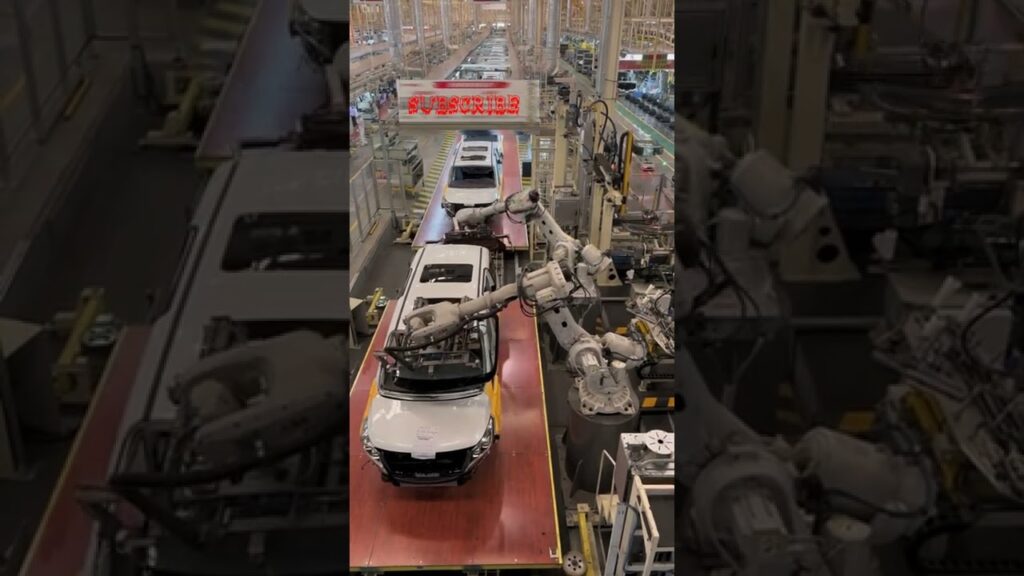Industrial Automation Robots have revolutionized numerous industries with their efficiency and precision. These advanced robots are designed to execute tasks that were previously carried out by humans. While the implementation of automation technology has increased productivity and reduced costs in various sectors, there are instances where manual labor still seems more expensive. One such example is the process of vehicle glass manufacturing, where the cost of handcrafting is significantly higher compared to automation. In this article, we will explore the reasons behind this disparity and shed light on the impact of Industrial Automation Robots in the vehicle glass industry.
The advent of automation technology has transformed the vehicle glass manufacturing process, making it faster, more efficient, and less prone to errors. In the past, car windshields and windows were manually cut and shaped by skilled craftsmen. However, this traditional approach came with its own set of challenges. Handcrafting glass is a labor-intensive task that requires specialized skills and meticulous attention to detail, and even the slightest human error can result in wastage of materials and increased production costs.
The implementation of Industrial Automation Robots in the vehicle glass industry has brought forth a multitude of benefits. These high-tech robots are equipped with state-of-the-art sensors and programming capabilities that enable them to perform complex tasks with utmost precision. They can cut, shape, and assemble glass sheets with unparalleled accuracy, significantly reducing the chances of errors. This not only minimizes wastage but also ensures that the final product meets the highest quality standards.
In addition to improving the quality of the end product, automation technology also enhances productivity. Industrial Automation Robots can work round the clock without any breaks or fatigue, thereby increasing the production output. This significantly reduces the manufacturing lead time, enabling companies to meet customer demands more efficiently. Moreover, the use of robots in the vehicle glass industry also ensures consistent production rates, eliminating the variations that often occur with human craftsmanship.
While the initial investment required for Industrial Automation Robots may seem substantial, the long-term benefits outweigh the costs. These robots have a higher operational lifespan and require minimal maintenance compared to human workers. Additionally, automation technology helps in minimizing production errors and reducing wastage, resulting in significant cost savings in the long run.
Furthermore, the use of Industrial Automation Robots in the vehicle glass industry has also improved workplace safety. Manual glass cutting and shaping involve various risks, ranging from accidental injuries to exposure to harmful chemicals. By automating these processes, there is a reduced risk of workplace accidents, creating a safer working environment for employees.
Despite the numerous advantages of Industrial Automation Robots, there are certain limitations to their implementation in the vehicle glass industry. The initial programming and setup of the robots require skilled technical engineers who have expertise in automation technology. Moreover, the customization of the automation system to cater to specific glass shapes and designs may add complexity to the process. However, advancements in robotics and artificial intelligence are constantly addressing these challenges, making automation technology more accessible and adaptable in various industries.
In conclusion, Industrial Automation Robots have revolutionized the vehicle glass manufacturing process by providing unrivaled precision, increased productivity, and improved workplace safety. The manual labor involved in handcrafting vehicle glass comes with its own set of challenges, including higher production costs and increased chances of errors. By automating these processes, companies in the vehicle glass industry can benefit from reduced costs, improved quality control, and enhanced manufacturing efficiency. With the continuous evolution of automation technology, it is evident that Industrial Automation Robots are here to stay and will continue to transform industries for years to come.
Industrial Robot
"Efficiency of Robotic Arm in Assembling Car Glasses: Exploring Industrial Automation Technology and Robots"


